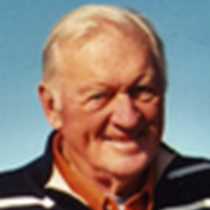Palouse River, Washington
Nothing can impede visits to the wonders of Palouse River country. A grey sky and occasional breezes were ignored as guests departed the Sea Lion in three directions: 200-foot Palouse Falls and the dramatic Channeled Scablands, shoreline explorations in the double and single kayaks, and Zodiac tours of basalt cliffs and wetlands. Historians and Naturalists led and/or narrated each of the above excursions.
Surface views of the scenic Palouse River – caused by backwater from the nearby Snake River Lower Monumental Dam – attracted guests who didn’t mind wind in their face and the gentle rocking of kayaks or Zodiacs. From these craft the search was on for river otters, swooping raptors, the mud homes of cliff swallows, and a parade of riverside trees and grasses. Among the flora seen: Big Sagebrush; Black Cottonwood; Russian Olive; Desert Parsley. Birds sightings included: several species of hawks, American Crow, Raven, Black-billed Magpie, Canada Geese, Grebes and Teals.
The Palouse Falls visit revealed one of the last watery Inland Empire remnants of the Bretz Floods (named in honor of geologist J Harlan Bretz who described this washed surface as the result of 40-100 great Pleistocene floods). Surrounding the wild upper reaches of the Palouse River and Falls are spectacular canyons, basalt outcroppings, and brown grasses (green during most of the year) in the midst of jackrabbit and rattlesnake country.
Traversing the lower Snake River – Palus Indian country for thousands of years – set the stage for gazing at basalt monuments and caves, topped by modern day wheat lands. Guests also heard afternoon presentations: “Native Americans and the Lewis & Clark Expedition” by Evan Haefeli, and “Fish Crisis on the Rivers” by Junius Rochester.
After Recap and dinner the Historian introduced a video about entrepreneur Sam Hill and building the 1917 Columbia River Scenic Gorge Highway which helped orient guests to the next day’s visit to the Columbia River Discovery Center and hiking and biking opportunities on Hill’s famous serpentine route.
Nothing can impede visits to the wonders of Palouse River country. A grey sky and occasional breezes were ignored as guests departed the Sea Lion in three directions: 200-foot Palouse Falls and the dramatic Channeled Scablands, shoreline explorations in the double and single kayaks, and Zodiac tours of basalt cliffs and wetlands. Historians and Naturalists led and/or narrated each of the above excursions.
Surface views of the scenic Palouse River – caused by backwater from the nearby Snake River Lower Monumental Dam – attracted guests who didn’t mind wind in their face and the gentle rocking of kayaks or Zodiacs. From these craft the search was on for river otters, swooping raptors, the mud homes of cliff swallows, and a parade of riverside trees and grasses. Among the flora seen: Big Sagebrush; Black Cottonwood; Russian Olive; Desert Parsley. Birds sightings included: several species of hawks, American Crow, Raven, Black-billed Magpie, Canada Geese, Grebes and Teals.
The Palouse Falls visit revealed one of the last watery Inland Empire remnants of the Bretz Floods (named in honor of geologist J Harlan Bretz who described this washed surface as the result of 40-100 great Pleistocene floods). Surrounding the wild upper reaches of the Palouse River and Falls are spectacular canyons, basalt outcroppings, and brown grasses (green during most of the year) in the midst of jackrabbit and rattlesnake country.
Traversing the lower Snake River – Palus Indian country for thousands of years – set the stage for gazing at basalt monuments and caves, topped by modern day wheat lands. Guests also heard afternoon presentations: “Native Americans and the Lewis & Clark Expedition” by Evan Haefeli, and “Fish Crisis on the Rivers” by Junius Rochester.
After Recap and dinner the Historian introduced a video about entrepreneur Sam Hill and building the 1917 Columbia River Scenic Gorge Highway which helped orient guests to the next day’s visit to the Columbia River Discovery Center and hiking and biking opportunities on Hill’s famous serpentine route.




